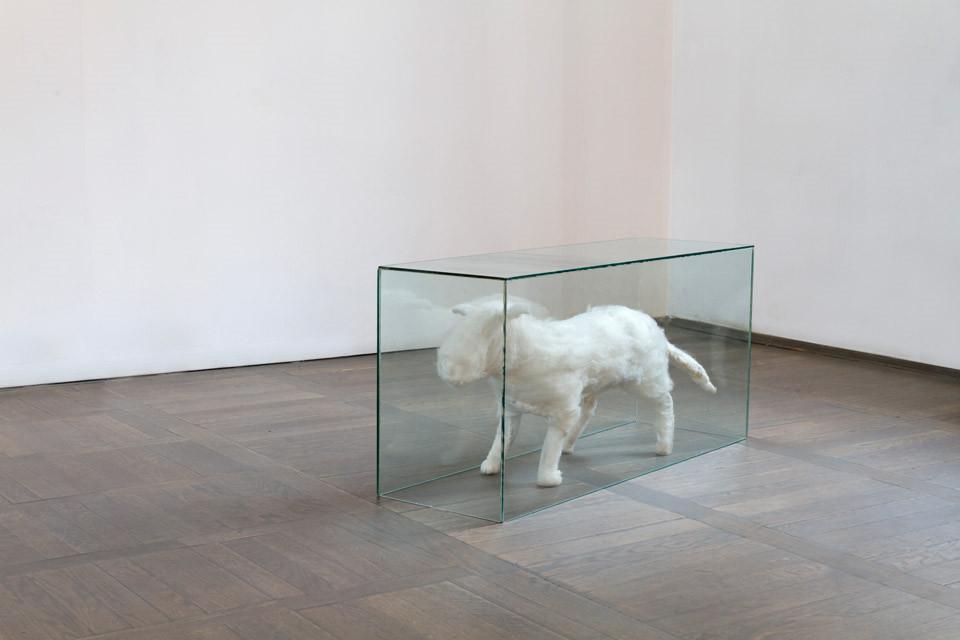Mirosław Bałka
A Clean Doggy
Mirosław Bałka, A Clean Doggy, 1986object, PAN fibre, metal frame, 29 × 83 × 16 cm, glass display case, 41 × 85 × 28 cm
Collection II of the Arsenal Gallery in Białystok. Work purchased by the Arsenal Gallery in 2014

A Clean Doggy is one of Mirosław Bałka’s early sculptures. It belongs to a group of works created in the second half of the 1980s, a brief period when Bałka took a literal approach to forms, figures and bodies. In this period, he constructed wooden or metal skeletons around which he formed the “bodies” of his sculptures out of cement, PAN fibres or jute bags. He quickly abandoned this language of expression in favour of abstract forms which evoke the body and corporeality, but are far from their direct representations.
Animals occupied an important place in Bałka’s work at the time, suffice it to mention the sculptures he created especially for exhibitions: a wolf made from a jute sack and plaster sheep resembling Easter lambs (Wolves – Not Wolves, TPSP Gallery, Warsaw, 1985), a rabbit with water dripping from its eyes (Praecepta Patris Mei Servivi Semper, Galeria Pokaz, Warsaw, 1986) or a white hare sewn from pillowcases, filled with rags from the house in Żuków, where the artist had organised the defence of his diploma thesis a year earlier (A Post-Feast Exhibition, opened on the first Tuesday after Easter, Wieża Gallery, Warsaw, 1986). The hare bared its steel fangs, white-painted animal traps were scattered on the floor. These works functioned within a wide circle of references, primarily related to religion and religiosity, as well as the artist’s experiences. The exhibition Praecepta… opened on St Nicholas Day, and its title, which means “I have always kept the commandments of my Father”, refers to a quotation from the Gospel of St John (John, 15:10) which is a part of the iconography of St Nicholas.
The “clean doggy” resembles both a powerfully built bullterrier and a small sheep. Bałka plays on ambiguities here: white, the colour of innocence, and the fluffy texture are at odds with the perception of this menacing breed. It is hard to resist the feeling that some evil lurks in this seemingly neutral thing. Bałka had used a similar trick with the figure of the hare: with its steel teeth, it has lost the gentleness of an Easter plushie. The synthetic language and multiplicity of associations used by the artist make it impossible to read the sculpture’s meanings in an clear-cut way, allowing room for its contextualisation instead. To Bałka, thinking about animals, including the attributes bestowed on them by humans, is a tool for formulating existential problems. In this context, his sculptural depictions of animals can therefore be seen as an expression of his reflections on the nature of human existence.

PLAN YOUR VISIT
Opening times:
Thuesday – Sunday
10:00-18:00
Last admission
to exhibition is at:
17.30